Ukrainian hryvnia
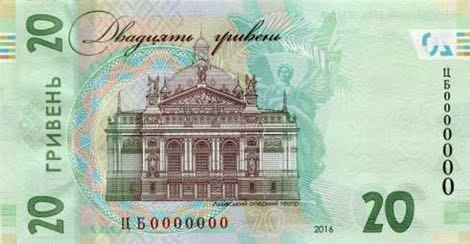
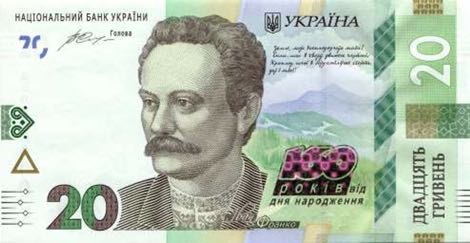


Цей твір ліцензовано за ліцензією Creative Commons Із Зазначенням Авторства 4.0 Міжнародна.




Цей твір ліцензовано за ліцензією Creative Commons Із Зазначенням Авторства 4.0 Міжнародна.
Well, I think you’ve read about the Polish złoty in general, now I can pass to the commemorative coins. And here we go:
I’ll show you all the commemorative coins of the PRL(People’s Republic of Poland). We start from 1964 – when those were launched, and finish by 1990, when the People’s Republic of Poland(Rzeczpospolita Polska Ludowa) was proclaimed:
Year 1964 Aldo Domini:
(katalogmonet.pl)
Year 1965:
Nike

Sigismund’s Column

Year 1966
1,000 Years of Poland

Sigismund’s Column(small)

Year 1967
Karol Świerczewski

Maria Skłodowska-Curie
Year 1968
25 Years of Armia Ludowa

Year 1969
25 years of the PRL


Year 1970
Byliśmy, Jesteśmy, Będziemy!

Year 1971
FAO


50 years of the Silesian Uprising

1972
50 years of Gdynia sea port

Chopin

Year 1974
Comecon


Kopernik

Curie

30 years of the PRL

Year 1975
International Day of Women
Royal Palace, WAW

Helena Modrzejewska

Ignacy Jan Paderewski

30 years of victory over fascism

Year 1976
Kościuszko

Pułaski
Kościuszko in gold
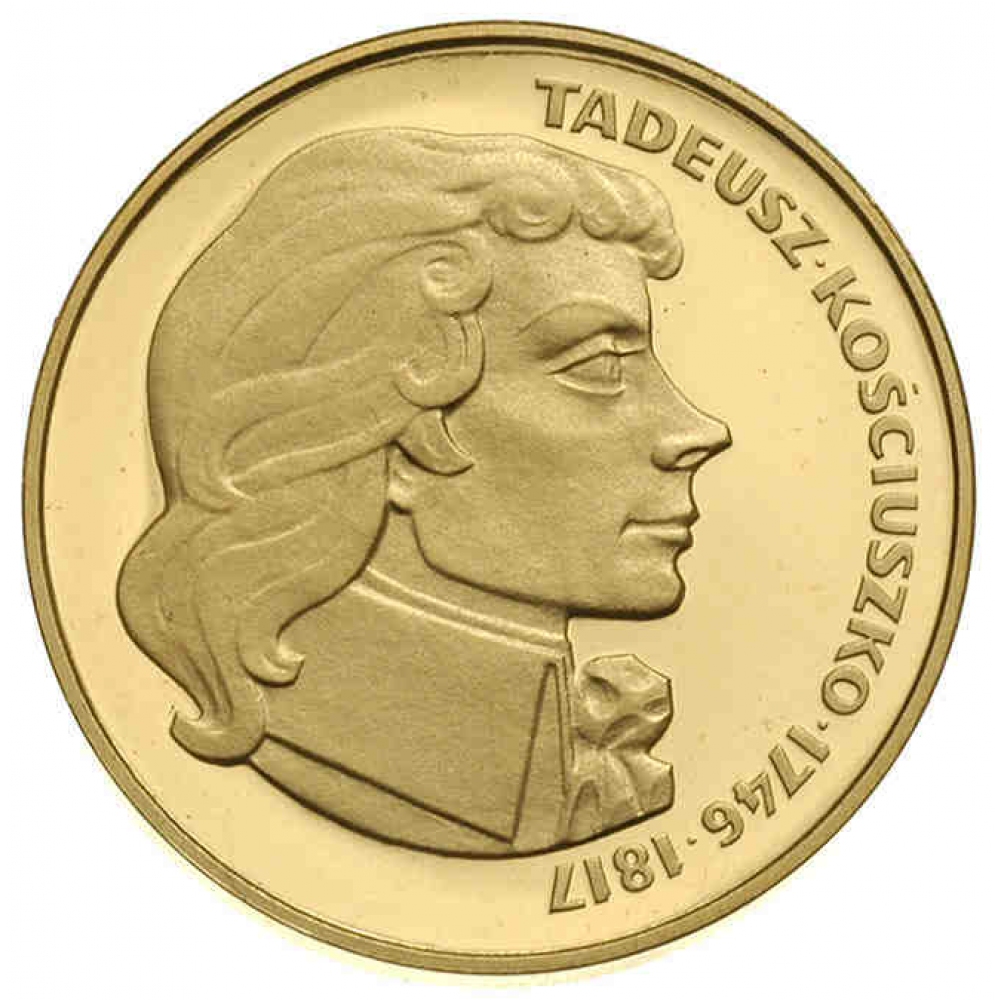

Pułaski in gold

XXI Olymic Games

1977
European bison

Władysław Reymont


Henryk Sienkiewicz


Wawel Castle, KRK

Chopin in Gold

Year 1978
Maria Konopnicka

The first Polish in space

Moose


Adam Mickiewicz

Janusz Korczak

Beaver


Year 1979
Henryk Wieniawski

Ludwik Zamenhof


Lynx


Mountain goat
Mieszko I


International Child Year


Mieszko I(cheap)
Mieszko I(expensive)


Kopernik

Curie

Year 1980
XXII Summer Olympics
„Dar Pomorza”


Bolesław I the Brave

Casimir I the Restorer

XXII Olympic Games


Jan Kochanowski

Western capercaille
XIII Winter Olympics – Lake Placid(without the Olympic Fire)
.jpg)
XIII Winter Olympics – Lake Placid(with the Olympic Fire)


Bolesław I the Brave

Kazimierz I the Restorer

Bolesław I the Brave


Lake Placid


Kazimierz I the Restorer


Year 1981 AD(Jaruzelski in rage)
Bolesław II the Generous
Władysław I Herman


Władysław Sikorski

16 OCT – International Food Day

Again Władysław Sikorski – in silver

Horse

Bolesław II the Generous

Władysław I Herman

Bolesław II the Generous(again???) now in gold

Władysław I Herman

Year 1982
Bolesław III the Wrymouth

Stork
Jan Paweł II

Football World Cup v. 1.9.8.2

Bolesław III the Wrymouth

JPII (more expensive)


JPII(even more expensive), releases 1982-3

JPII(again??!!) now in gold




Again??!!


WTF??? Aargh!!!


It is Papistmania!!! I thought communists were non-religious, were they?
Year 1983
John III Sobieski

Ignacy Łukasiewicz
150 years of the Great Theatre(WAW)
Bear
John III Sobieski

Year 1984
Wincenty Witos

40 years of the PRL

L.A. Olympics v. 1.9.8.4.2


Sarajewo, YU, Olmpics v. 1.9.8.4.1

Swan
Year 1985
Przemysław II

Again that Przemysław


Squirrel


UN

Year 1986 AD
Władysław I Łokietek

Again him

Football FIFA World Cup v. 1.9.8.6

Owl


JP II again……..
Year 1987
Casimir III the Great


Again…


Olympics v. 1.9.8.8.1(Calgary, AB)

Olympics v. 1.9.8.8.2(Seoul, SKR)

1988 UEFA Football Cup

JPII(no comments)

JPII







Year 1988 – inflation released into wild
Queen Jadwiga

70 years of the Greater Poland uprising

Jadwiga
1990 FIFA World Cup

John Paul II bash(cross)

John Paul II – 10 years of pontificate


Now in gold









Year 1989 – Roaring Hundreds – entering to Furious Thousands
Władysław II Jagiełło
50 years of the WWII


Save the historical sights of Toruń

Toruń and Mikołaj Kopernik
Westerplatte

Władysław Jagiełło



JPII(GAAH!!!!!!!)














Well, as you see, we can make 2 conclusions:
Leszek Balcerowicz started painful reforms that introduced Polish inflation from the Roaring Hundreds into Furious Thousands. Not for long, however. In 1992 the Roaring Hundreds dissappeared, and already in 1994 inflation was calmly creeping under the Breezy Tens. The tendency stayed until 2014(Calm Ones) before entering the deflation zone(Still Minuses), in which Poland is today. And there are two periods: before 1995 and after 1995
On 29 Dec 1989 the Sejm started making a mess with the Constitution, making PRL only RP. As in Ukraine, where the politics had nothing to do but to wipe out Communism, the złoty was raging. As you’ll later see, the coins issued in cupronickel were worth 20,000 zł, or 2 PLN. Numismats saw denominations as high as 300,000 zł, while the older coins were rendered worthless.
So here they are, the hyperinflation coins:
Year 1990(Furious Thousands making a f*** up in Poland)
Solidarność – the trade union movement

Józef Piłsudski



Tadeusz Kościuszko


Chopin’s Monument in Warsaw



Stefan Rowecki „Grot”

Tadeusz Komorowski „Bór”


SOLIDARNOŚĆ!
Common reverse(types A and C) Common averse(types A,D and the thick one)


Type B and the thick one Types B and C


Type D

Golden SOLIDARNOŚĆ!(As type B)
50,000 zł






Golden – Tadeusz Kościuszko – extremely rare


I wonder how did they manage to put 6 zeros in the coin:(. Poor people… Everybody was a millionaire, but it wasn’t extraordinary. As in Zimbabwe – „starving Billionaire”
Józef Piłsudski

Fryderyk Chopin



Year 1991 AD. Soviets fall. Inflation wind calms down
Narvik

Henryk Dobrzański „Hubal”


Battle of Britain

Tobruk


Olympic Games v. 1.9.9.2.1(Albertville)
Olympic Games v. 1.9.9.2.2(Barcelona)



General Michał Tokarzewski-Karaszewicz


70 years of the International Poznań fairs


Leopold Okulicki
Ustawa Rządowa(3rd May 1791 Constitution)




225 years of the Warsaw Mint – first bimetallic coin ever in Poland

Year 1992 A.D.
Władysław III Warneńczyk


200 years of Virtuti Militari – first non-circular coin in Poland, „strange” for non-British

Wojciech Korfanty


Seville Expo

500 years of the New World discovery
Stanisław Staszic(non 50K-zł)

Convoys


Władysław III Warneńczyk



Year 1993
Łańcut castle


Swallows
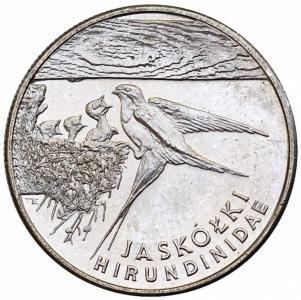

Casimir IV Jagiellończyk

Olympic Games v. 1.9.9.4

Resistance coin


Kazimierz IV Jagiellończyk



750 years of Szczecin city rights

Lillehammer


Zamość – the UNESCO World Heritage site from air


50 years of the Warsaw Ghetto Uprising


Łańcut castle(Castles and Palaces of Poland)


Swallows


Year 1994 A.D. Inflation breeze calms down
75 years of the Związek Inwalidów Wojennych

Monte Cassino


Sigismund I the Old

New building of the mint opening


200 years of the Kościuszko insurrection
FIFA World Cup in USA

50 years of the Warsaw uprising

75 years of the Polish Związek Inwalidów Wojennych

Polish Soldier in WWII – Monte Cassino


Sigismund I the Old
.jpg)
.jpg)
200 years of the Kościuszko uprising

Maksymilian Kolbe


50 years of the Warsaw Uprising


70 years of the bank Polski rebirth


At least we have the denomination, so that a sum like 3,5 bln zł didn’t sound like – ah, that is so little! And we have more and more coins – just here.
These are divided into several series. I’ll show them. Each separately.
Castle in Łańcut(see 1993)
Royal Palace in Łazienki(1995)


Lidzbark Warmiński Castle(1996)


Pieskowa Skała castle(1997)

Kórnik Castle(1998)

Radzyń Podlaski Palace(1999)


Wilanów Palace(2000)


See also:1977-94
1995-today
Catfish(1995)

Hedgehog(1996)



1997 – stag beetle

1998 – Toad


1999 – Wolf


2000 – Hoopoe




2001 – Papillo Machaon




2002 – Turtle

2003 – European Eel


2004 – Porpoise




2005 – Eagle-Owl



2006 – Marmot


2007 – Grey seal


2008 – Pelegrine falcon

2009 – Green lizard


2010 – Lesser Horseshoe bat



2011 – Beaver

2013 – European bison


2014 – Konik

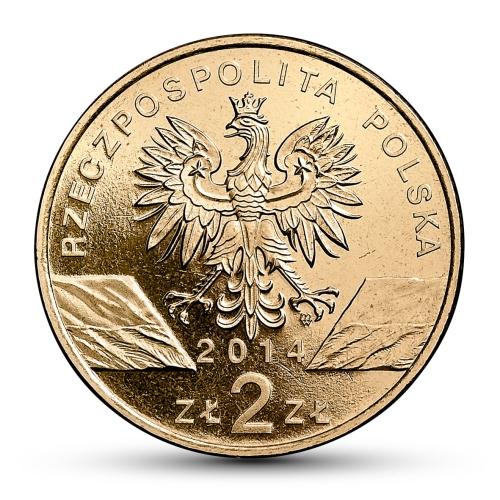


2015 – Honey bee

Huh… Poles love animals.
Now to the Voivoderships. You know that Poland has 16 voivoderships(Zachodniopomorskie, Pomorskie, Warmińsko-Mazurskie, Podlaskie, Lubelskie, Podkarpackie, Małopolskie, Śląskie, Opolskie, Dolnośląskie, Lubuskie(not Lubelskie), Wielkopolskie, Kujawsko-Pomorskie, Mazowieckie, Łódzkie and Świętokrzyskie). In 2004-5 the NBP wasn’t lazy in commemorating the new administrative division.
Here you are:



























Commemorates coins that were in the II RP
















2001 – Wieliczka salt mines




2002 – Malbork Castle




2006 – Haczów church



2007- Medieval city(Toruń)


2008 – Kazimierz Dolny



2012-

Цей твір ліцензовано за ліцензією Creative Commons Із Зазначенням Авторства 4.0 Міжнародна.
Today I’ll talk about numismatics – in other words, everything about money. I’ll start with the Polish złoty.
The history of złote dates back to the XV century when the Sejm(kind of a Parliament) ratified an order to estabilish a new currency. The system was very complicated, however. It isn’t even Bolivia with 12 1/2 centimos or even USSR with 1, 2, 3, 5, 10, 15, 20, 25 and 50 kopeyek. It was pretty worse.
The base unit at that time was not złoty, but grosz(however, paradoxically, they created złote(pl. of złoty), not grosze(pl. of grosz) ). So, if you were somewhere in Western Ukraine, Kraków, Poznań or Gdańsk, you’d often hear people saying that a person earns 210 groszy a month(at that time it was a huge amount of money).
To complicate the matter, it was said that 1 złoty is not 100 groszy, as it is now, but 30 groszy. That means, that if you gave anybody the banknote you see below(hypothetically), that would mean 50 złotych but only 1500 groszy. Even though this was a sum o about 20 g of pure gold(how cheap it was :()
Picture source: banknotypolskie.pl/files/img/2/banknote_50_zl_2012.jpg

There was a SUPERLARGE amount of coins in circulation(up to 24 types at the same time).
If we imagined dollar coins, then we’d have:
That existed till 1764, when the last king of Poland – Stanisław August Poniatowski started making the general cleaning of the system. Why so?
Firstly, there were a few mints in Poland, situated in Gdańsk, Kraków, Elbląg, Toruń, Riga, Lwów, and a few other cities. Every mint had its own standard of coins, which made a pretty big mess, because local coins were usually smaller than their centralised counterparts in Warsaw, which meant they were easier to couterfeit, and, of course, meant that some cunning counterfeiter would take centalized coins, melt them into the stamps for coins, and get up to twice as much silver coins in value.
Secondly, the de jure currency rate was not equal to the de facto one. For example, 1 talar was officially equal 4 złote, while in fact it cost 9 złote 20 groszy. Why so?
The problem was, the govts wanted to save pretty much money on minting, so they introduced coins with a reduced amount of silver. That meant that the actual price for molten coin is smaller than the denomination, which, again, encouraged counterfeiters:). As the govts measured the coins by the amount of siver there, not the denomination on the coin, we have a situation where the actual price of coins was only 12/29 of the value stamped in Warsaw.
Thirdly, Poland was in a deep economic crisis since about 1660. The Sejms were all the time adjourned without any decisions made. This was money. There was a disastrous Northern War(1700-1721) in which Poland was tricked(it didn’t receive Inflants(Latvia and S Estonia)). It only spent money on an army which was already weak.
Finally, though it diminished the feeble prestige of the once strong Rzeczpospolita, the king of Poland could at least go more to copper coins. That was cheaper for the mints, and it corresponded to the value of the coin.
Fortunately or not, Poland was already too weak at the time to fight against its three neighbours: Russia, Prussia and Austria, at once, which were all willing to receive some piece of Poland – like vultures on carrion.
To conduct extensive reforms, Stanisław indebted his country deeply, and that made the currency weaken itself over time. Finally, there were two hyperinflations, in 1787 and 1791, when the currency was denominated.
And here comes the HERO OF POLAND – Tadeusz Kościuszko. This guy might have just been sitting in his home and watching Poland falling, but what he did is outrageous.
After the II Partition of Poland, there were only 2 possible fates: uprising or III Partition.
Tadek could not accept the latter at all, so he collected people on a віче(council) and declared that he gonna fight for Poland… But STOP. What is the relation to złoty?
Well, in 1794 a monetary reform was conducted that introduced banknotes. These are not the banknotes that we are used to, but still it was a big advance. That was quite good for the weak economy, because it was no use to release a 100 zł coins, like in the 1990s, even in copper, if we could print banknotes to stop galloping inflation, which persisted all over the Uprising.
Unfortunately, it failed, and the III Partition was held in Grodno. Złoty stayed in ex-Poland only in Russian part. The currency was tied by market rates, and no official ones were put. In other parts, there was no złoty.
The złoty revived in 1815… but now I’ll take a cup of coffee, because I’m tired telling so much. So enjoy pics as for now.
(Taken from wikipedia.com, concerning the first 4 images, the bottom ones are from banknotypolskie.pl)






Huuuuuh… I’ve rested, so it’s high time to continue.
The Napoleonic era passed, the Vienna congress estabilished new borders. And here we have two złote: the Congress Poland złoty(Russian part) and the Free City of Kraków złoty. The Congress Poland one used the 1/15 system while the Free City of Kraków used the old good 1/30.
At first everything was absolutely fine in the Congress Poland, and coins were issued only in złote. Strangely, złoty was considered a foreign currency in the Bank of Russia equivalent, so there were no restrictions to use it. Złoty was tied in a rate that 1 gr was equal 1/2 kopecks, meaning that 1 zł was equal 7 1/2 kopecks. In Warsaw, coins were released in the denominations of 1, 3, 5, 10 gr, 1, 2, 5, 10, 25, and 50 zł. There were also banknotes released in the denominations of 5, 10, 25 and 100, 500 and 1000 zł. BUT, it had to be guaranteed that they were exchanged into coins, when St.-Petersburg wishes to. That means Warsaw had to produce expensive coins, instead of printing cheaply. By the regulation, there had to be at least 1/7 of the value of the released banknotes. Stupid, isn’t it?
Somebody had a brilliant idea to make an uprising again. It was long prepaired, and in late 1830, it blasted out. The rebels also left some material for numismates to work on. There were a few banknotes – 1, 5, 50 and 100 zł in notes+ 10, 3 gr and 1, 2, 5 zł coins(1 zł was trial). Again, the uprising failed, and all the money of rebels was banned, but wasn’t taken out of circulation until 1838.
Here came the question, in 1831 – what to do with złote??? Somebody proposed to ban it, but there were superlarge faults with the ruble, so that Warsaw and St.-Petersburg decided to mint double-denomination coins. 1 ruble, there, cost 6 2/3 złote. In 1832-1841 such coins were released (image from: http://wcn.pl/eauctions/151022/details/45188):

They circulated till 1841, when a new rate was estabilished – 1 ruble=2 złote. At the same time there were no restrictions in minting only złote coins – they were minted up to 1865, as the regular Russian coins. The double-denomiated coins were made till 1850.
In 1868 the Warsaw mint was abolished, and the złoty ceased to exist.
In Kraków, the złoty existed until 1846, when the Kraków rebellion was extinguished. The coin is below (from ru.wikipedia.org).
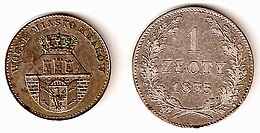
And again, a small break… because no złoty exists. We move into 1924 by the time machine:).
When Poland became independent in 1918, it made a stupid decision of creating a Polish marka, not złoty. Why stupid? Because the deutsche mark had a hyperinflatory process after surrendering to the Entente, and the Polish, as Ukrainians say, „trap onto the same rake”. Only stupid people could invent such an idea, and yet they followed it.
Poland was in a very difficult situation. Nobody liked her – USSR and Germany primarily. The former kept the hatred as a result of the lost battle of Warsaw. The Piłsudski’s Legions veterans helped pretty much in defence. These are commemorated on a banknote from 2014 and a 5,000,000 zł banknote(not in circulation) from 2006(dated 1995).
From http://static.prsa.pl/images/ef8cbf02-9574-4f59-bfa0-566d01399852.jpg

From http://www.nbp.pl/banknoty_i_monety/banknoty_kolekcjonerskie/img/2014_legiony_20zl_R_big.jpg

From http://historia.org.pl/wp-content/uploads/2013/07/banknot-pilsudski.jpeg

That didn’t help, however. Three years of war and a „Country of three pieces” made the management of Poland extremely difficult, and politics could only shrug their shoulders on that. As a result, Poland saw banknotes with a few zeros. No, not like Zimbabwe, but still 8 zeros is a big number, if to add one at the beginning. In total, a pan called Władysław Grabski decided it was unbearable. He redenominated marka onto złote. 1 złoty was worth 1.8 mln marek. The officials, however, tricked the poor people, as they offered 1-gr overstamp for 500,000 marek, and 2 5-gr for a 10 mln banknote. Still, there was no other way to survive.
At the same time Poland minted coins extensively, but, of course, they can’t appear at once, so that the officials introduced the so-called bilety zdawkowe, which had to be exchanged into coins by Dec 31, 1925. At the same time banknotes, dated 1919, and featuring the forementioned Kościuszko(mostly) were introduced. You can see them all here. In 1925 new banknotes were being introduced, up to 1938, when a 1 zł banknote was issued. There are lots of them, I’ll show those that aren’t on Wikipedia




Coins were also issued, of course( 1, 2, 5, 10, 20, 50 gr and 1 zł). There are a few commemorative coins, again pics available on Wikipedia(the one below is the Constitution commemorative coin). There were no commemorative banknotes(or at least we don’t know about it).

Then we have some General Government banknotes. Nazis wanted to expand, same as Soviets, so Poland was dissolved from the maps. The General Government did issue złoty, while the USSR did not. See what these banknotes are:













Then follows the worst banknote series I ever saw, so I won’t show it, really, however I want it. Just a waste of paper
Then, under the electrification slogans and the BS the Soviet propaganda were carrying, they tried to modernize the NBP(National Bank of Poland) by creating some printing machines to create quite a lot of banknotes. These you can see below:The last is somewhat better than the others, I think.
Issue 1946:














Issue 1947:








Issue 1948:














And, strangely, they haven’t printed anything for more than 15 yeas since 1948 series! The reason is, all the previous banknotes had to be exchanged IN 6 DAYS. The 1948 issue was kept secret till the end of October 1950 and is all about the Social Realism. All the previous series were to be exchanged in such a way that 100 1944-47 zł were only 1 zł from 1948. These circulated for about 25 years before being exchanged onto a new series.
In 1965, the govts decided to release a 1000 zł banknote, completely different from other ones.


And another series of 1965 which failed – these test banknotes feature both people and buildings
Ok. I’ll take another cup of coffee(I’m falling asleep while writing), so enjoy the collection of People’s Republic of Poland coins.
1 grosz:

2 gr:


5 gr:

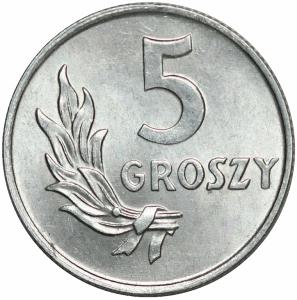



10 gr:


20 gr:



50 gr:


1 zł:



2 zł:








10 zł:







20 zł:




1990-1994 hyperinflatory coins:

.
At last, all the normal coins were shown above, but won’t show zillions of commemorative coins of 1965-94. If you want, you can wait till the next post with all the commemorative coins of PRL and III Rzeczpospolita.
As you can see, złoty was weaker as time passed, because we can already see 10 zł coins of 1973. By the way, Edward Gierek, secretary of PZPR(ruling party) took rather too much debts, and they were impossible to pay for the country. So we see the V communist series of banknotes, which grew with months passing. That is why, to save money, did Jaruzelski want to issue 10 and 20 zł in banknotes, not coins. Here you are:
10 zł:


20 zł:

50 zł


100 zł:

200 zł

500 zł

1,000 zł:


2,000 zł

5,000 zł:


10,000 zł:

20,000 zł:


50,000 zł:
Series 1989:


Series 1993:


100,000 zł
Series 1989:

Series 1993:


200,000 zł

500,000 zł
Series 1990:


Series 1993:


1,000,000 zł
Series 1991:


Series 1993:

2,000,000 zł
Series 1992:

Series 1993

Wow, that is pretty lot. But NBP said ‚stop’ to it, as it was f****** tired to print more banknote and to pronounce something like:”Na budowę obwodnicy Nw. Dworu Mazowieckiego było wydzielono 853 mld 473 mln zł.”(853 bln 473 mln zł were allocated to build the Nw. Dwór Mazowiecki bypass). Or you go to the shop to buy a dozen of eggs: ‚15,600 złotych, proszę’. So another redenomination occurred, in 1995-6. At that time all the old banknotes were taken out of circulation while new were introduced. However, if you have such a banknote now, I’m very sad, as now you can’t exchange it in the NBP: the deadline was 31 Dec 2010.:(.
When the question about the redenomination arose in 1990, few believed they’ll see one dollar for 2 zł. Still, they did. However, there was one design to mention before we come to our current banknotes.
In 1990, a guy called Waldemar Andrzejewski was inspired by the city topic, so he decided to make a „Cities of Poland” issue. It failed, however, because, unfortunately, the author did not think about security features. Sad, he returned with his 888 zł to his home. You’ll now see those:
1 zł:

2 zł

5 zł


10 zł:


20 zł

50 zł


100 zł

200 zł


500 zł


These bankn0tes are quite OK, but they are never seen in circulation.
Instead, Andrzej Heindrich, the designer of the today’s banknotes, was cheerful in 1994, because his banknotes won. There are two series: 1994 and 2012. They are below:
10 zł:
Series 1994:


Series 2012


20 zł
Series 1994:

-donatedsb_b.jpg)
Seires 2012:


50 zł:
Series 1994:


Series 2012:

100 zł:
Series 1994:


Series 2012:
200 zł
Series 1994:


Series 2015:


500 zł(to be released in 2017)


Of course, we shouldn’t forget coins:
1 gr


2 gr
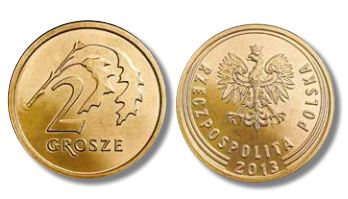


5 gr

10 gr


20 gr


50 gr


1 zł


2 zł


5 zł


And, finally, commemorative banknotes(you have seen one at the beginning). Note. Commemorative coins will be shown in another post in Numismatics topic.
Piłsudski:


Słowacki


Chopin


Curie


Długosz


Christianization of Poland(1050)


JP II


Thank you for reading the post.

Цей твір ліцензовано за ліцензією Creative Commons Із Зазначенням Авторства 4.0 Міжнародна.
Learn here about different science occurrencies and objects by following this post! Here different science topics will be given in an attractive way so that everybody understands. From History to Astronomy, from Biology to Chemistry – everything will be discussed. I’ll try to make everything to post every day, however, I can’t often do that physically:(. Help me if you’d like to.